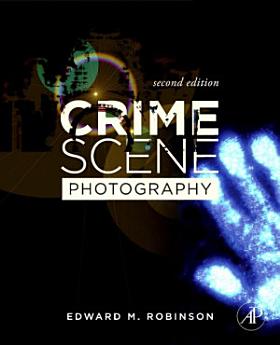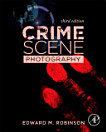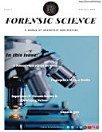Crime Scene Photography: Edition 2
ফেব্ৰু ২০১০ · Academic Press
ইবুক
720
পৃষ্ঠা
family_home
যোগ্য
info
reportমূল্যাংকন আৰু পৰ্যালোচনা সত্যাপন কৰা হোৱা নাই অধিক জানক
এই ইবুকখনৰ বিষয়ে
Crime Scene Photography, Second Edition, offers an introduction to the basic concepts of forensic picture-taking. The forensic photographer, or more specifically the crime scene photographer, must know how to create an acceptable image that is capable of withstanding challenges in court. The photographic theory and principles have to be well grounded in the physics of optics, the how-to recommendations have to work, and the end result must be admissible in court. Based on the author's years of experience in the field at both the Arlington County and Baltimore County Police Departments, this book blends the practical functions of crime scene processing with theories of photography to guide the student in acquiring the skills, knowledge, and ability to render reliable evidence. This text has been carefully constructed for ease of use and effectiveness in training and was class-tested by the author at George Washington University. Beginning August 2008, this book will be required reading by the IAI Crime Scene Certification Board for all levels of certification (through August 2011). - Over 600 full color photographs - Two new chapters on 'The History of Forensic Photography,' and 'Digital Image Processing of Evidentiary Photography' - An essential reference for crime scene photography, including topics such as Composition, the Inverse Square Law, Court Cases affecting photography, Digital Image Processing, and Photogrammetry - Required reading by the Crime Scene Certification Board of the International Association for Identification (IAI) for all levels of certification
লিখকৰ বিষয়ে
Edward M. Robinson began his career in law enforcement in 1971, with the Arlington County (Virginia) Police Department (ACPD). After 25 years with the ACPD, Mr. Robinson created the Crime Scene Investigation concentration at The George Washington University for their Master of Forensic Science degree program, and continues there today.
এই ইবুকখনক মূল্যাংকন কৰক
আমাক আপোনাৰ মতামত জনাওক।
পঢ়াৰ নির্দেশাৱলী
স্মাৰ্টফ’ন আৰু টেবলেট
Android আৰু iPad/iPhoneৰ বাবে Google Play Books এপটো ইনষ্টল কৰক। ই স্বয়ংক্রিয়ভাৱে আপোনাৰ একাউণ্টৰ সৈতে ছিংক হয় আৰু আপুনি য'তে নাথাকক ত'তেই কোনো অডিঅ'বুক অনলাইন বা অফলাইনত শুনিবলৈ সুবিধা দিয়ে।
লেপটপ আৰু কম্পিউটাৰ
আপুনি কম্পিউটাৰৰ ৱেব ব্রাউজাৰ ব্যৱহাৰ কৰি Google Playত কিনা অডিঅ'বুকসমূহ শুনিব পাৰে।
ই-ৰীডাৰ আৰু অন্য ডিভাইচ
Kobo eReadersৰ দৰে ই-চিয়াঁহীৰ ডিভাইচসমূহত পঢ়িবলৈ, আপুনি এটা ফাইল ডাউনল’ড কৰি সেইটো আপোনাৰ ডিভাইচলৈ স্থানান্তৰণ কৰিব লাগিব। সমৰ্থিত ই-ৰিডাৰলৈ ফাইলটো কেনেকৈ স্থানান্তৰ কৰিব জানিবলৈ সহায় কেন্দ্ৰত থকা সবিশেষ নিৰ্দেশাৱলী চাওক।







